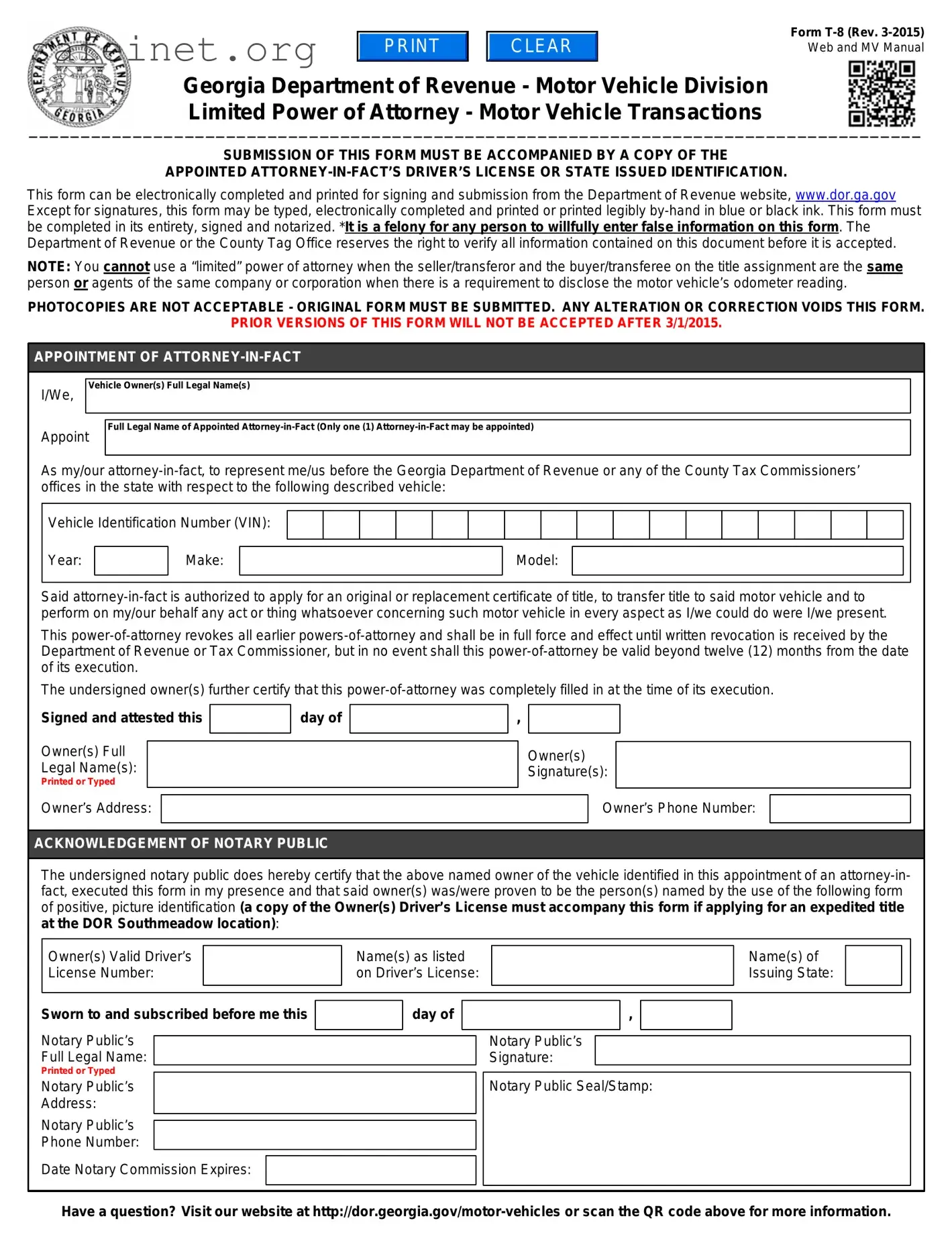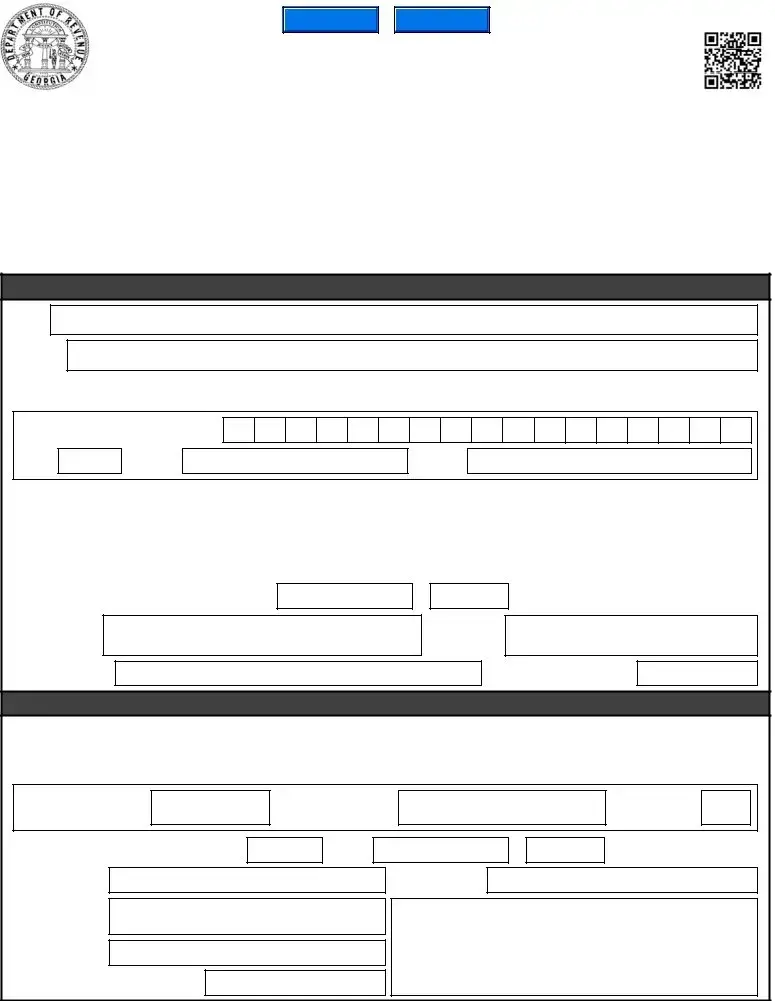The Vehicle Power of Attorney (POA) form t-8 authorizes an individual to manage specific transactions related to a vehicle on behalf of the owner. This document is akin to the general POA, which grants someone the authority to act on behalf of another person in a broad range of matters. Both forms enable individuals to delegate their responsibilities, ensuring smooth transactions when the principal is unable to act personally. However, the general POA is not limited to vehicle-related transactions and can encompass everything from financial to legal matters.
Another similar document is the Durable Power of Attorney. This form allows the appointed agent to act on behalf of the principal even if the principal becomes incapacitated. Like the Vehicle POA t-8, the Durable POA ensures that someone can continue to manage important affairs when the owner is unable to do so. It emphasizes the importance of having a trusted person in place, providing peace of mind regarding future uncertainties.
A Bill of Sale is also comparable, as it is commonly used for transferring ownership of a vehicle. While the Vehicle POA t-8 allows for delegation of authority to handle vehicle transactions, the Bill of Sale formalizes the change of ownership. Understanding both documents is essential for anyone involved in buying or selling a vehicle, as they serve distinct functions in the transaction process.
The Release of Liability form is another related document. When a vehicle is sold, the seller typically files this form with the appropriate authority to notify them that they are no longer responsible for the vehicle's actions or any liabilities associated with it. The Vehicle POA t-8 can facilitate this process by allowing an agent to act on behalf of the seller in completing necessary transactions, including filing a Release of Liability.
A title transfer application serves a similar purpose, as it is used to officially transfer ownership of a vehicle from one person to another. The Vehicle POA t-8 enables someone to initiate this process on behalf of the owner, illustrating how both documents can work in tandem. They simplify the ownership transfer, ensuring that records with the Department of Motor Vehicles (DMV) remain accurate and up to date.
In addition, the Application for Duplicate Title can be seen as a related form. It allows an individual to request a replacement title for a vehicle that has been lost or damaged. If a person is unable to apply for this on their own, the Vehicle POA t-8 allows an agent to handle the application on their behalf, making it crucial for those who may be temporarily unavailable.
The vehicle registration form is also significant, as it is required to register a vehicle with state authorities. The Vehicle POA t-8 allows an appointed person to complete and submit this form, providing another example of the practical use of such authorizations. Ensuring proper registration is vital for legal compliance and avoids potential fines.
The Lease Agreement can be likened to the Vehicle POA t-8 in the realm of vehicles. A lease transfers the possession of a vehicle from an owner to a lessee while retaining ownership. The Vehicle POA t-8 can empower an agent to manage activities related to the lease, such as signing documents, making payments, or negotiating terms. This flexibility highlights the comprehensive nature of vehicle-related transactions.
Lastly, an Insurance Policy Declaration page holds similarities due to its role in documenting vehicle coverage. The Vehicle POA t-8 facilitates discussions or negotiations with insurers if the vehicle owner cannot engage. Such delegation ensures that the vehicle remains covered, demonstrating the interconnectedness of these documents within vehicle management.

